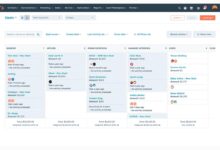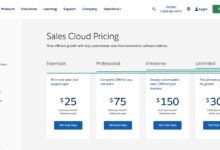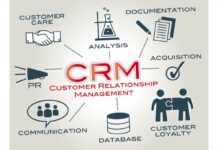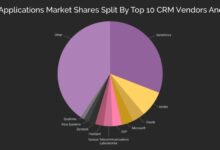CRM System Pricing: 7 Shocking Truths You Can’t Ignore
Choosing the right CRM system pricing model can make or break your business growth. With so many options and hidden costs, it’s easy to get overwhelmed. Let’s cut through the noise and reveal what you’re really paying for.
Understanding CRM System Pricing Models

Before diving into specific vendors or features, it’s crucial to understand the different pricing models used across CRM platforms. These models directly impact your budget, scalability, and long-term ROI. Whether you’re a startup or an enterprise, knowing how CRM system pricing works is the first step toward making a smart investment.
Subscription-Based Pricing
This is the most common CRM system pricing model today. Vendors charge a recurring fee—usually monthly or annually—per user. It’s predictable, scalable, and ideal for businesses that want flexibility without large upfront costs.
- Typically billed per user per month (e.g., $12/user/month)
- Allows easy scaling up or down based on team size
- Often includes automatic updates and customer support
For example, Salesforce uses this model across its various editions, from Essentials to Unlimited, offering tiered functionality at increasing price points.
Flat-Rate Pricing
Some CRM providers offer a single flat fee for unlimited users within a certain feature set. This model is rare but highly attractive for small teams or startups with limited budgets.
- No per-user charges—ideal for growing teams
- Limited in advanced features compared to enterprise plans
- May have caps on contacts, emails, or automation
Platforms like Zoho CRM offer flat-rate plans in their lower tiers, making them accessible for solopreneurs and small businesses.
Usage-Based or Tiered Pricing
In this model, pricing scales based on usage metrics such as number of contacts, email volume, API calls, or automation workflows. It’s more complex but can be cost-effective for businesses with fluctuating needs.
- Pay only for what you use
- Can become expensive if usage spikes unexpectedly
- Common in cloud-based CRMs with heavy data processing
For instance, HubSpot uses a hybrid approach where marketing and sales hubs are priced based on contacts and feature usage, adding complexity to CRM system pricing calculations.
Key Factors That Influence CRM System Pricing
CRM system pricing isn’t just about the sticker price. Several underlying factors determine how much you’ll actually pay over time. Understanding these variables helps avoid surprise costs and ensures better alignment with your business goals.
Number of Users
Most CRM platforms charge per user, which means your bill grows as your team expands. While this seems straightforward, some vendors define ‘users’ differently—some count logins, others count active seats.
- Admins, sales reps, and marketers may all be counted equally
- Some vendors offer ‘light’ or ‘read-only’ licenses at lower rates
- Enterprise deals often include volume discounts
For example, Microsoft Dynamics 365 charges different rates for full users versus team members, allowing companies to optimize CRM system pricing based on access level.
Feature Tiers and Modules
Vendors segment their software into tiers—Basic, Professional, Enterprise—each unlocking more powerful tools. The jump from one tier to the next can double or triple your costs.
- Basic plans often lack automation, reporting, or integrations
- Premium tiers include AI insights, advanced workflows, and custom dashboards
- Additional modules (e.g., marketing automation, customer service) are often sold separately
“The real cost of a CRM isn’t the monthly fee—it’s the features you need but don’t have.” — TechCrunch, 2023
This modular approach means that CRM system pricing can quickly escalate when you add essential functionalities like lead scoring or territory management.
Deployment Type: Cloud vs On-Premise
The way you deploy your CRM significantly affects total cost. Cloud-based CRMs dominate the market due to lower initial investment, while on-premise solutions require heavy infrastructure and IT support.
- Cloud CRM: Lower upfront cost, predictable monthly fees, automatic updates
- On-premise CRM: High initial licensing and hardware costs, ongoing maintenance fees
- Hybrid models exist but complicate CRM system pricing structures
According to Gartner, over 85% of new CRM deployments in 2024 are cloud-based, driven by scalability and remote work demands.
Top CRM Platforms and Their Pricing Breakdown
To make informed decisions, let’s compare some of the leading CRM platforms and analyze how their CRM system pricing stacks up against functionality and value.
Salesforce: The Enterprise Leader
Salesforce remains the gold standard for enterprise CRM, but its CRM system pricing reflects its premium positioning.
- Salesforce Essentials: $25/user/month (basic CRM)
- Salesforce Professional: $80/user/month
- Salesforce Enterprise: $165/user/month
- Unlimited Edition: $330/user/month
Additional costs include add-ons like Sales Cloud Einstein ($50/user/month) and Pardot for marketing automation (starting at $1,250/month). Implementation services can cost tens of thousands, especially for large organizations.
HubSpot CRM: Free to Start, Costly to Scale
HubSpot’s freemium model makes it a favorite among startups, but CRM system pricing increases sharply as you scale.
- Free plan: Full-featured CRM with basic tools
- Starter plan: $45/month (up to 1,000 contacts)
- Sales Hub Professional: $800/month (for 5 users)
- Sales Hub Enterprise: $3,200/month (for 5 users)
While the entry point is attractive, advanced automation, custom reporting, and multi-touch attribution come at a steep price. For businesses exceeding 10,000 contacts, CRM system pricing can surpass $10,000/month.
Zoho CRM: Budget-Friendly Powerhouse
Zoho CRM offers one of the most competitive CRM system pricing models, especially for small and mid-sized businesses.
- Free plan: Up to 3 users
- Standard: $14/user/month
- Professional: $23/user/month
- Enterprise: $40/user/month
- Ultimate: $52/user/month
Zoho also offers a flat-rate option for the Standard plan at $1,150/year (billed annually), making it one of the few vendors with true flat-rate CRM system pricing. Its AI assistant, Zia, is included in higher tiers, adding value without extra cost.
Hidden Costs in CRM System Pricing
The advertised price is rarely the final cost. Many businesses underestimate the total expense of CRM ownership due to overlooked or hidden fees embedded in CRM system pricing.
Implementation and Onboarding Fees
Setting up a CRM isn’t plug-and-play. Data migration, user training, workflow configuration, and integration setup often require professional services.
- Consulting fees can range from $5,000 to $50,000+
- Some vendors charge hourly ($150–$300/hour)
- Third-party consultants may be needed for complex deployments
For example, Salesforce partners often charge $10,000+ for basic implementation, even for mid-sized companies.
Integration and API Costs
CRMs don’t work in isolation. Connecting to email, marketing tools, ERP systems, or e-commerce platforms often incurs additional charges.
- Some platforms limit API calls per month
- Exceeding limits triggers overage fees
- Third-party integration tools like Zapier or MuleSoft add recurring costs
Microsoft Dynamics 365, for instance, charges extra for data integration packs and API usage beyond standard allowances.
Customization and Development
As your business evolves, so do your CRM needs. Custom fields, workflows, reports, and UI changes often require developer time or paid upgrades.
- Custom modules can cost $5,000–$20,000 to build
- Monthly maintenance fees for custom code
- Upgrades may break customizations, requiring rework
“We saved $12,000/year on licensing but spent $45,000 on customization. The CRM paid for itself in 18 months.” — CTO, Mid-Market SaaS Company
How to Choose the Right CRM System Pricing Plan
Selecting the right CRM isn’t just about the lowest price—it’s about value, scalability, and alignment with your business strategy. Here’s how to evaluate CRM system pricing intelligently.
Assess Your Business Size and Needs
A solopreneur doesn’t need enterprise-grade AI analytics, just as a global sales team can’t rely on a free CRM. Match your plan to your actual requirements.
- Small businesses: Focus on affordability and ease of use
- Mid-market: Look for automation, integrations, and team collaboration
- Enterprise: Prioritize security, scalability, and customizability
For example, a 10-person sales team might thrive on Zoho CRM’s Professional plan ($23/user/month), while a 500-person organization may require Salesforce Enterprise with custom development.
Calculate Total Cost of Ownership (TCO)
Don’t just look at the monthly subscription. Factor in all direct and indirect costs over a 3–5 year period.
- Subscription fees (per user, per month)
- Implementation and training
- Integration tools and API costs
- Customization and ongoing support
- Downtime and productivity loss during rollout
A CRM that costs $50/user/month might end up costing $120/user/month when all hidden fees are included. Use a TCO calculator to compare options objectively.
Negotiate and Leverage Discounts
Most CRM vendors are willing to negotiate, especially for annual commitments or large user counts.
- Ask for annual billing discounts (often 10–20%)
- Request free training or onboarding credits
- Bundling multiple products (e.g., CRM + marketing automation)
- Nonprofits and startups may qualify for special pricing
For instance, HubSpot offers up to 30% off for annual prepayment and discounts for educational institutions.
Free vs Paid CRM: Is Free Really Better?
Free CRMs like HubSpot, Zoho, and Freshsales are tempting, but they come with trade-offs that affect long-term CRM system pricing and performance.
Advantages of Free CRM Systems
Free plans lower the barrier to entry and allow testing before investing.
- No financial risk during trial phase
- Basic features sufficient for early-stage businesses
- Easy to upgrade when ready
HubSpot’s free CRM includes contact management, deal tracking, email integration, and basic reporting—enough to get started.
Limitations of Free CRMs
As your business grows, free plans quickly become limiting.
- Restricted automation and workflows
- Limited reporting and analytics
- No phone support or SLAs
- Branding and user limits
Most free CRMs cap the number of contacts or monthly emails. Once you hit those limits, you’re forced to upgrade—often at a steep price jump.
When to Upgrade from Free to Paid
The right time to upgrade depends on your growth trajectory and operational needs.
- When you need automation (e.g., lead assignment, follow-up sequences)
- When your team exceeds 3–5 users
- When you require integrations with other tools
- When reporting becomes critical for decision-making
Upgrading too late can cost more in lost productivity than the subscription itself.
Future Trends in CRM System Pricing
The CRM landscape is evolving, and so is CRM system pricing. Emerging technologies and market demands are reshaping how vendors charge for their services.
Rise of AI-Powered Features
Artificial intelligence is no longer a luxury—it’s becoming a core part of CRM functionality, but often at a premium.
- Salesforce Einstein adds $50/user/month
- HubSpot’s AI tools are bundled in higher tiers
- Microsoft Copilot for Dynamics 365 is an add-on
Expect AI features to become standard in mid-tier plans within 2–3 years, potentially increasing base CRM system pricing across the board.
Consolidation of Sales and Marketing Platforms
Vendors are bundling CRM with marketing automation, customer service, and commerce tools into unified platforms.
- HubSpot’s Growth Suite combines CRM, marketing, sales, and service
- Salesforce Customer 360 offers end-to-end customer journey management
- Bundled pricing can save money but reduces flexibility
This trend favors all-in-one solutions but may lock businesses into ecosystems, affecting long-term CRM system pricing flexibility.
Increased Focus on Value-Based Pricing
Some vendors are experimenting with pricing based on ROI or usage outcomes rather than just users or features.
- Pricing tied to revenue generated or deals closed
- Pay-per-success models in early testing
- Still niche, but could disrupt traditional CRM system pricing
While not mainstream yet, this shift could make CRM more accessible to performance-driven businesses.
How to Maximize ROI from Your CRM Investment
Ultimately, the best CRM system pricing is the one that delivers the highest return. Here’s how to ensure your CRM pays for itself.
Train Your Team Thoroughly
Poor adoption is the #1 reason CRMs fail. Even the cheapest CRM is a waste if no one uses it.
- Provide hands-on training sessions
- Create internal documentation and cheat sheets
- Assign CRM champions in each department
Companies with formal CRM training report 3x higher user adoption rates, according to Capterra.
Integrate with Core Business Tools
A CRM should be the central hub of your operations, not a silo.
- Connect to email, calendar, phone, and video conferencing
- Sync with accounting, ERP, and e-commerce platforms
- Use automation to reduce manual data entry
Integration ensures data flows seamlessly, improving accuracy and saving hours of work.
Monitor Usage and Optimize Regularly
Set KPIs and track CRM performance monthly.
- Measure sales cycle length, conversion rates, and deal size
- Identify underused features and retrain staff
- Remove unused users or modules to cut costs
Regular audits can uncover savings of 15–30% in CRM system pricing over time.
What is the average cost of a CRM system?
The average cost of a CRM system ranges from $12 to $250 per user per month, depending on the vendor, features, and deployment model. Entry-level CRMs like Zoho start at $14/user/month, while enterprise solutions like Salesforce can exceed $300/user/month. Additional costs for implementation, customization, and integrations can significantly increase the total expense.
Are there any truly free CRM systems?
Yes, several CRM systems offer free plans with robust features, including HubSpot CRM, Zoho CRM (up to 3 users), and Freshsales. However, these free versions typically have limitations on automation, reporting, and support. They are ideal for startups and small businesses but may require upgrading as your needs grow.
How can I reduce my CRM system pricing costs?
You can reduce CRM costs by negotiating annual contracts, removing inactive users, avoiding unnecessary add-ons, leveraging free training resources, and choosing flat-rate or bundled plans. Regularly auditing your usage and renegotiating with vendors can also lead to significant savings.
Does CRM system pricing include support and updates?
In most cloud-based CRM systems, support and automatic updates are included in the subscription fee. However, premium support (e.g., 24/7 phone support, dedicated account managers) often requires an additional fee. On-premise solutions may charge separately for maintenance and upgrades.
Can I switch CRM providers without losing data?
Yes, most modern CRM platforms allow data export and import via CSV, APIs, or third-party migration tools. However, complex customizations or legacy data structures may require professional assistance. Always back up your data before switching and verify field mappings to ensure a smooth transition.
Choosing the right CRM system pricing model is more than just comparing monthly fees.It’s about understanding your business needs, anticipating hidden costs, and maximizing long-term value.From subscription models to AI-driven features, the landscape is complex but navigable with the right knowledge.Whether you’re starting with a free plan or investing in an enterprise solution, the key is alignment—between cost, functionality, and strategic goals.
.By evaluating total cost of ownership, leveraging discounts, and focusing on ROI, you can turn your CRM from a cost center into a growth engine.The most expensive CRM isn’t always the best, and the cheapest isn’t always the smartest.The best choice is the one that scales with you, delivers measurable results, and fits your budget—today and tomorrow..
Further Reading:



